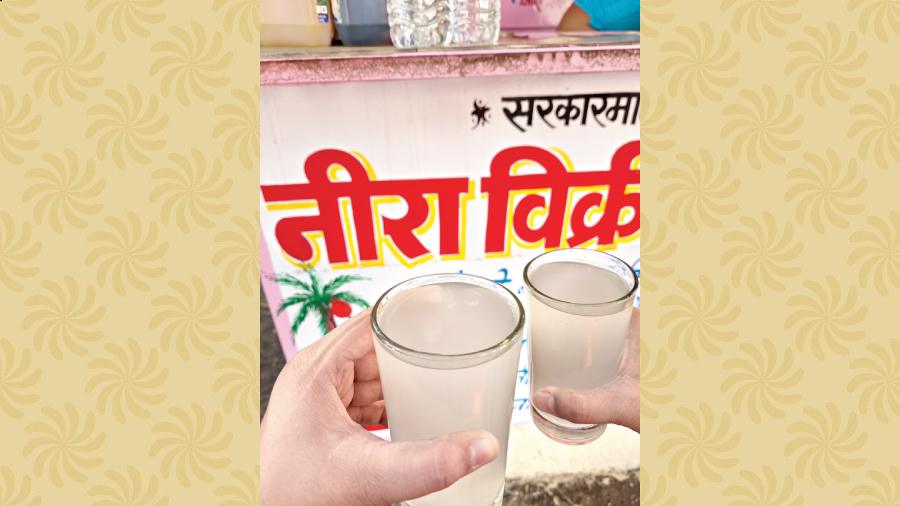Poona has long changed to Pune. High-rises have taken over colonial buildings, malls have shifted shoppers from the local markets, but the city, known as the Queen of the Deccan, remains the cultural capital of the Maratha people. It has managed well to maintain an equilibrium between the old and the new. And the same balance reflects in the eateries across the city as well. On a three-day hurricane trip to Pune, I managed to check out some of the most iconic places on Pune’s gastronomic map.
NEERA PANI
Neera, palm nectar, is collected early before sunrise and stored fresh. One of the best natural drinks, neera is available at small kiosks on pavements in and around the city. Priced at Rs 20, the sweetness of the drink reduces with the day and can also have an intoxicating effect if left till evening. So it’s best to have it at day time, before dark.

Chitale Bandhu Mithaiwale
CHITALE BANDHU MITHAIWALE
You cannot miss Chitale Bandhu at the Deccan Gymkhana and Sadashiv Peth when you visit Pune. As Punekars say, “Chitale Bandhu is world famous”. This is an institution in itself when it comes to getting the traditional Maharashtrian snacks and sweets. Started in 1950, it is popular for its Bakarwadi — the Maharashtrian version of the spring roll, with a filling of fresh coriander. “Our Mango Barfi, Pune Special Chiwda, Shrikhand and Amrakhand are always in demand. But our Bakarwadi is our highest-selling product and each day we sell around 5,000kg of it. We often export them to the US as well, as with special packaging they last up to six months,” said G.N. Chitale, director.
If you wish to buy more than one goodie, you must have the patience to stand in separate queues to get your share. Phew!
They are available online and cater to cities across India.
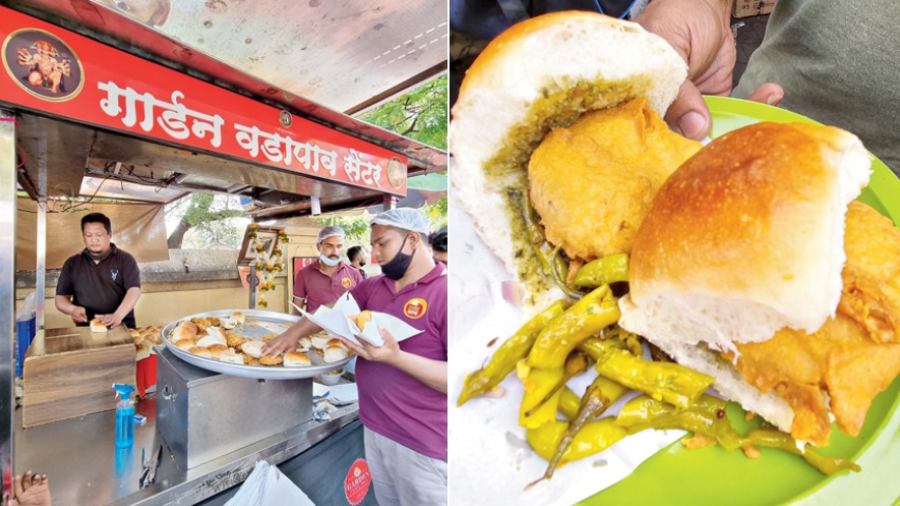
Garden vada pao
GARDEN VADA PAO
If Calcutta runs on its kathi roll, for Pune it’s the Vada Pav. And Garden Vada Pao (opposite JJ Garden) is the place to get your bite. If you feel the vada-pav culture is a bit overrated in the city, wait till you visit this place.
When I visited in the scorching heat around 3pm, there were at least 50 people waiting to get their share from the handcart that functions as the busiest vada pav stall in the area. An interesting story goes around the city about how the income tax department calculated Garden Vada Pao’s earning by collecting the paper from the dustbins! It is not just pocket-friendly but is also a wholesome snack. Just add some nimbu, pyaaz, mirchi and their special chutney to your vada pav and spice it up for the real desi taste.
They are also available from delivery aggregators and often get “unserviceable” due to the heavy demand.
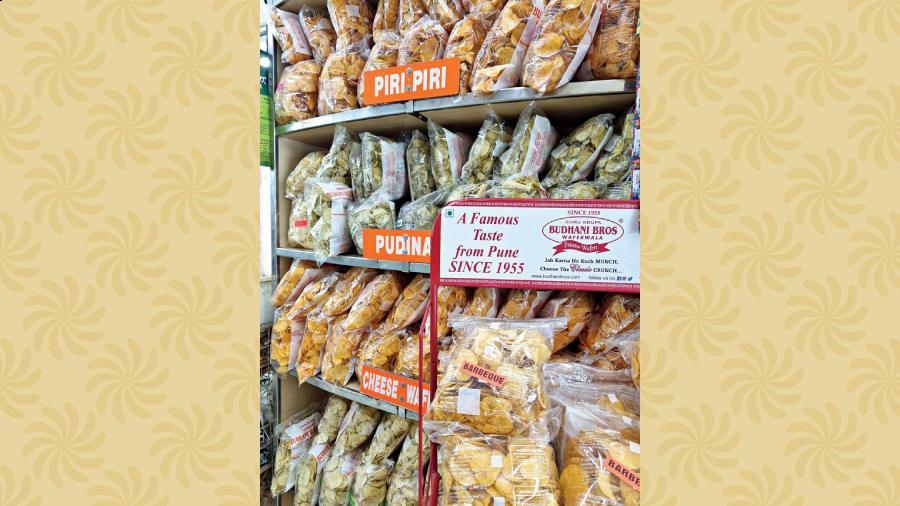
Budhani Bros Waferwala
BUDHANI BROS WAFERWALA
Another place that must be on your food map is Budhani Wafers on MG Road or Camp Area as it is popularly known. If you wish to find the place on your own, just close your eyes and follow your nose since the entire street smells of fresh wafers. For over 67 years, they have been serving hot, fresh potato chips every day in Pune in different flavours — plain, cheese, tomato, masala, pepper. Believe it or not they sell out all their goodies in a day! “We started with the regular potato wafers and then shifted to flavours. Our Potato Salli is popular among the Parsi community,” said one of the representatives at the counter. The Dry Fruit Chiwda, Potato Salli, Salted Cashew Nuts and Peanuts are also worth checking out. If you are checking your calorie, beware since this is a calorie feast in assorted flavours, shapes and colours.
There are several outlets on the same street, but the one inside a lane near a Sai Baba mandir is the oldest one.

Marz-o-rin
MARZ-O-RIN
Hop over to Marz-o-Rin that’s housed in a building that’s over 150 years old and is right opposite Budhani Wafers. It’s the first ‘cafe’ in Pune and opened shop back in 1965. Their Chutney Sandwich (coconut-coriander chutney), the first product made and sold by Sheriar J. Sheriyarji when he introduced Marz-o-rin to the city, is also the hottest selling item at this iconic eatery. Thick shakes like mango, chocolate, strawberry, along with different flavoured slushes are also high on demand. Their sandwiches, pastries, desserts and everything on the menu sell like hot cakes. The reason why Marz-o-Rin has remained popular among various generations of Punekars is because all their items are very easy on the pocket. “All the recipes that were made by my husband Sheriar are still used. You can find various generations sitting together enjoying at Marz-o-Rin,” said Vijay S. Sheriyarji, co-proprietor. At present there are over 100 items available, ranging from sweet, savoury and bakery products.
This is strictly a no-laptop zone, because it’s a place to sit, chill and enjoy the moments.

Kayani bakery
KAYANI BAKERY
Right behind Marz-o-Rin is East Street that houses Pune’s oldest and most famous bakery — Kayani. Established in 1955, Kayani is popular for its Shrewsbury biscuits but it’s a fight to get in there and get some packed. People from various cities come to Pune to get these buttery, melt-in-your-mouth biscuits. “They are all sold fresh and sometimes are over within two hours,” smiled a representative behind the counter. Though Shrewsbury originated in a town called Shrewsbury in England, many people think it was Pune where it was first made! That’s how popular Kayani Bakery has made them, not just in Pune, but all over India. They are closed on Sundays and not available on delivery aggregators, so plan your visit accordingly.
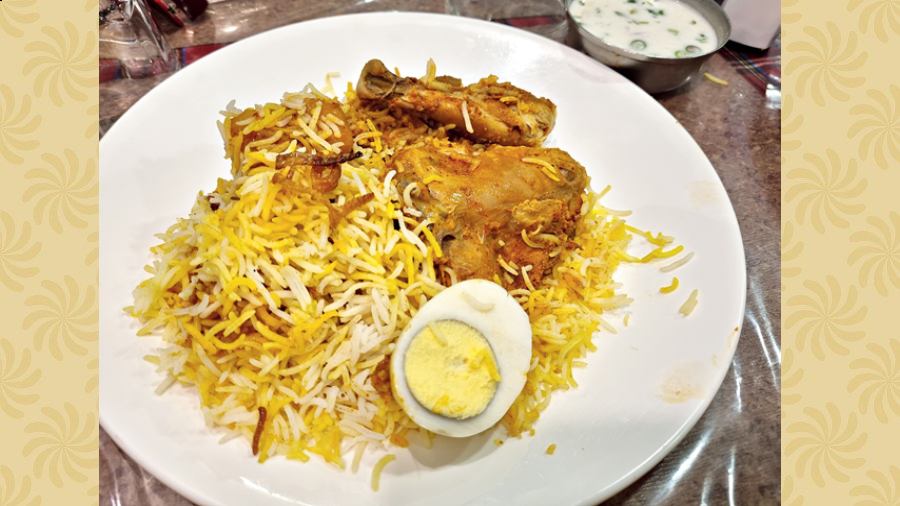
Biryani at George Restauran
GEORGE RESTAURANT
If you have come to Pune and not tried the biryani at George, your trip will remain incomplete. A landmark, icon, legendary place, George is considered to be one of the best restaurants in the city. Started in 1936 by the British, it has been run by an Iranian family since 1992. If you ask for a recommendation to the team they happily offer you their ‘mast taste’ biryani, which can be paired with butter chicken. The biryani, unlike the Calcutta version, is spicy and indeed mast. Among other popular items are Persian delicacies like Jujeh Kebab and Chello Kebab. What sets George apart is their courteous and smiling staff.

Goodluck Cafe
GOODLUCK CAFÉ
This is the city’s most popular Iranian restaurant located on F.C. (Fergusson College) Road and was established in 1935. It remains an integral part of the city’s identity and lifestyle. You will need a bit of ‘good luck’ to be able to find a place, so have patience. The old walls are covered with mirrors with the menu stuck above it. Rickety glass-topped wooden tables with plastic chairs and no air-conditioning welcome you as the familiar aroma of the bun-maska draws your attention. This place makes you time-travel to the good ol’ pre-tech days! They were also one of the first garden restaurants in the city.
Make it a point to sip on their Irani Chai. The first look of it might make you feel you have been fooled with a lebu cha, but that’s how GLC’s famous chai looks. No matter what time of the day you visit, you have to make it a point to ask for the bun maska. Go for a plate of egg bhurji or omelettes by the side. People with a sweet tooth must try their highest-selling item, the bread pudding. This baked pudding made with a mix of mashed bread, biscuits, nuts and some tutti-frutti is sheer bliss. Another refreshing discovery was Fruit Funny, a layer of mashed mixed fruits topped with fresh cream.
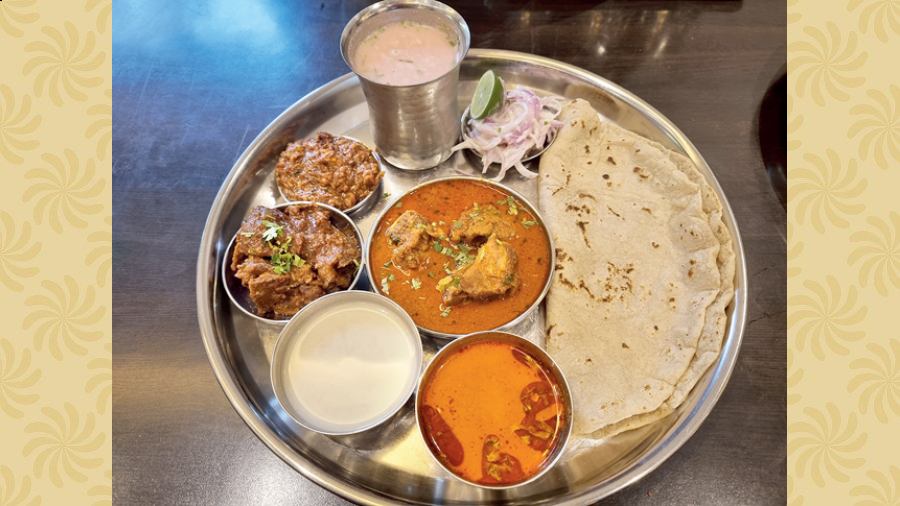
Thali at maratha samrat
MARATHA SAMRAT
For a taste of amazing Maharastrian food in Pune, it has to be Maratha Samrat. They have the best of Maharastrian menu, with recipes collected from across the state, and everything is served home-style. With multiple branches across the city, it’s a safe idea to go for a mutton/chicken thali, to get a taste of multiple items. I went for the Mutton Thali, which came with Tambda Rassa (a spicy, rich Kolhapuri mutton gravy), Bhakri, Indrayani rice, Mutton Curry, Mutton Fry and Keema Fry. An extra plate of a perfectly masaledar Egg Bhurji made my day! I had also asked for Solkadhi (chilled kokum and coconut milk drink) to cool myself down before I started the meal. Other special items include Kala Mutton Fry and Chicken Kharda Fry and seafood dishes like Surmai Rawa Fry, Prawn Koliwada and Pomfret Curry. I ended the meal with Sitaphal Rabdi.

A range of cheese at ABC Farm
ABC FARM
Located in a quiet nook at the end of Koregaon Park in Pune, ABC Farm is a strongly recommended place for people willing to try natural cheese and organic products. Managed by Sohrab Chinoy, 72, (he is the director) and his family, the farm started in 1976. Sohrab who calls himself a ‘doodhwala’ got into the dairy business as he was fascinated by his father’s work — he owned a dairy called Farmer Brothers — and the outdoor life. After completing his studies in Germany, Sohrab returned to India and started with the cattle farm. He started with one cheese, the Gouda, in the late 80s, that was followed by cheddar, edam and others. At present, ABC Cheese Farm produces 70 varieties of cheese. “I used to sell them myself at my MG Road shop. When people first saw cheese they used to think it is makkhan, for it’s yellow colour! There were funny expressions on their faces when I used to ask them to taste it, but some would love it. Even headache is a small word when it came to marketing them in the early years,” recalls Sohrab.
There is a limit to how much anyone can gorge on in a given amount of time. So, naturally, we had to give a few iconic places a miss. But they should really be on a foodie’s itinerary to Pune. They include Malaka Spice, German Bakery, Modern Cafe, Vohuman Cafe, Dorabjee and Badekar Misal. Bon apetit!
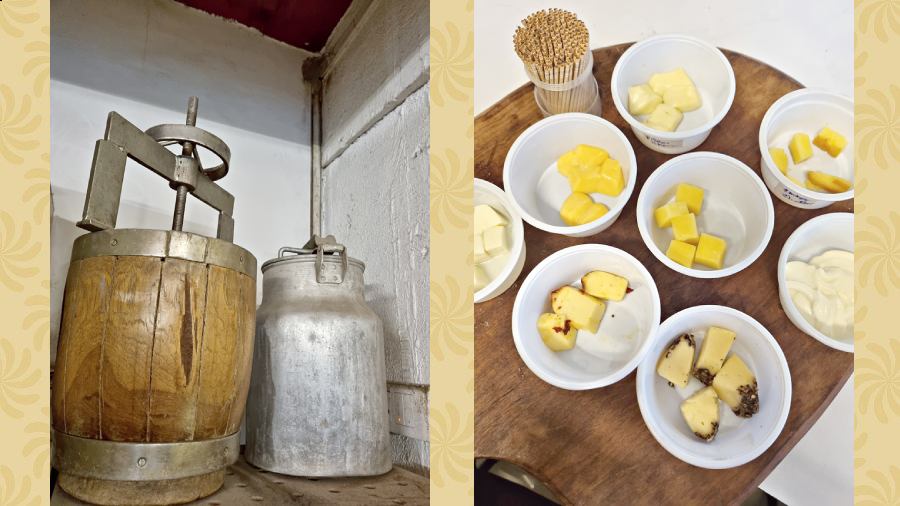
CHEESE production AT ABC FARM
At ABC Farm, Sohrab Chinoy took me on a walkthrough to explain how cheese is produced…
We first hit the pasteurising station, where milk from separate tanks (for cow, buffalo and goat milk) is transferred through pipes to be made bacteria-free. The next step is curdling the milk in a large tank. One can easily think it’s white curd in the tank, but this is called cheese curd, which once set, is cut with two knives, horizontal and vertically, to make small cubes. These cubes need to be allowed to settle for a while for it to leave the whey and become smaller in size and dense in structure. Next comes adding salt to these cubes (depending on what type of cheese is being made) and at this stage they are called green cheese.
The green cheese has to be now set into moulds and left overnight in a cheese press. After being pressed, these cubes become one whole body of cheese that has to be kept in a brine solution overnight. Drying the cheese and ripening it in a special temperature-controlled room follows, before they are packed for selling. Ripening can take between three months to a year, after which they are vacuum-packed for selling.
They have catered to Taj Bengal, The Oberoi Grand, The Kenilworth and The Park in Calcutta previously.
Apart from cheeses and dairy products like Lemsi (lemon lassi, one of their highest-selling items), they also produce other farm products like black rice, roasted coffee, cold-pressed coconut oil, all spice leaves, almond oil, daliya, honey, organic vinegar and many more.
They take pride in saying they are a zero-waste farm, where every single thing is used, upcycled or recycled.
Pictures by the author
The author is a public relations professional, an inveterate traveller and foodie, not necessarily in that order

